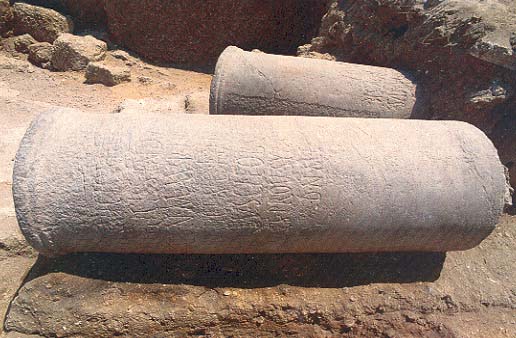Image Details

Courtesy of the excavation team
The earliest inscription on column 1, dating to between 135 and 212 C.E., honors Decimus Seius Seneca, a previously unknown governor of Syria-Palaestina (the name given by the Romans in the wake of two failed Jewish revolts to the province of which Caesarea was a part). Part of the bottom of this inscription was chiseled away to make room for subsequent inscriptions.
Both columns were next inscribed by local governors in honor of the Roman emperor Probus (276–282 C.E.); column 1 was turned upside down and column 2 was rotated to make room for the new inscriptions. For their last inscriptions, column 1 was rotated and column 2 was turned upside down; each bore dedications to the junior members of the tetrarchy headed by the emperor Diocletian, one for Constantius Chlorus and the other for Galerius (293–305 C.E.).
The burnt floor on which these columns were found, together with the burnt mosaic floors on either side of the dining room, suggest that Herod’s Promontory Palace came to a violent end, either at the hands of Persian or Arab conquerors in 614 or 640/641 C.E. respectively.
